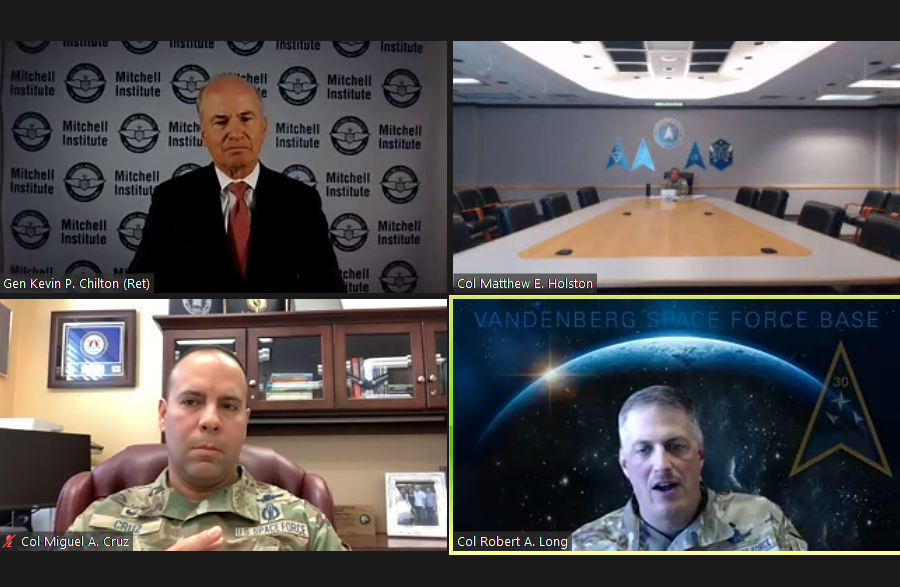The commander of the Space Force’s Space Launch Delta 30 envisions Vandenberg Space Force Base, Calif., as a “national spaceport” and said the launch delta is trying to figure out how to make that dream a reality.
Vandenberg has plenty of room to grow, and the convenience of launching into certain orbits—not to mention “demand signals” from customers—suggests commercial interest in launching from the site will continue to rise, said Col. Robert A. Long, who took over command of the launch delta in June. Long took part in a Spacepower Forum webinar by the Mitchell Institute of Aerospace Studies on Dec. 17.
At 180,000 acres, “Obviously the good thing about Vandenberg is we have plenty of land area,” Long said. Situated where rockets can launch to the south, the base is desirable because of the efficiency of getting to polar orbits. By launching in another direction to get to a polar orbit, companies might have to design their satellites differently based on where they launch from. Long characterized the “performance penalty” as “less payload to orbit.”
“So you could go to Cape Canaveral, and some do at times, but you pay a performance penalty when you do that,” Long said. Only “a few locations in the world … offer what we can provide here. No. 1 is location—but then just the infrastructure that’s been built up over the decades.”
Vandenberg already provides launch services “across the spectrum,” including to the military, civil, and private launch customers such as the National Reconnaissance Office, Air Force Global Strike Command, and the Missile Defense Agency. Activities include in addition to space launch include missile testing, aircraft testing, ground and sea force exercises—“quite the gamut,” Long said.
And the frequency of launches should keep going up.
“All forecasts are pointing to increased launch rates,” Long said. “United Launch Alliance and SpaceX aren’t slowing down anytime in the future. We have numerous new customers and interests coming out here—companies like Stratolaunch, Relativity, … and they’re all trying to figure out the best way to leverage our location, our set of services, for both space launching and, I should also mention, test activities.”
The decision to organize Space Force’s launch deltas differently kept the facilities and the mission under the same umbrella, a departure from the garrison-delta setup at other Space Force bases.
“Everyone realized that the launch mission is really hard to separate [from] the infrastructure side,” Long explained.
He said the launch delta has just begun to contemplate its transformation, studying and gathering feedback.
“We’re trying to really transform ourselves into this national spaceport model,” Long said. “We’re still working through what that model looks like and what it really is. We’re a customer service provider, and we want to provide … a host of tailorable services that facilitate safe, flexible, repeatable, simultaneous operations.”
So far, the launch delta has started to gather input from customers on things such as what “baseline level of services” it could provide: “We welcome any thoughts on that from industry—from all the smart people,” Long said.
Meanwhile, “We’re looking across the entire spectrum of analogous systems,” such as different airport models and types of seaports and transit authorities to “help inform what makes the most sense.” After all: “We’re definitely ramping up,” Long said. “We don’t see any letup in the future in terms of business.”
